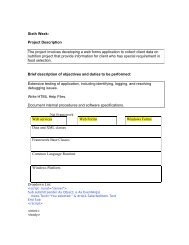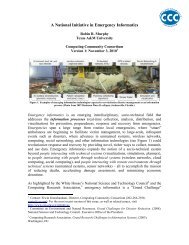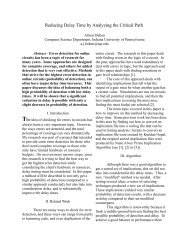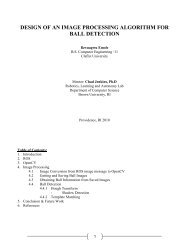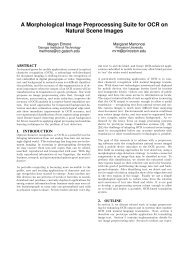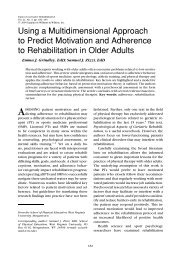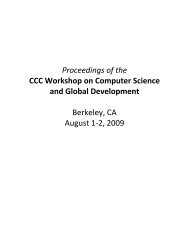High Performance Microchip Supply - Under Secretary of Defense ...
High Performance Microchip Supply - Under Secretary of Defense ...
High Performance Microchip Supply - Under Secretary of Defense ...
Create successful ePaper yourself
Turn your PDF publications into a flip-book with our unique Google optimized e-Paper software.
___________________________________________________________ RECOMMENDATIONS<br />
The military service research arms have also contributed major<br />
research support to U.S. universities and research laboratories. Their<br />
support has been for projects more aligned with DOD needs.<br />
Support for microelectronics at Air Force Office <strong>of</strong> Scientific Research<br />
(AFOSR), Office <strong>of</strong> Naval Research (ONR), and Army Research Office<br />
(ARO), however has dwindled over the past decade. These levels <strong>of</strong><br />
funding should be increased commensurate with the increases<br />
planned for NSF.<br />
As a result <strong>of</strong> recommendations by the Semiconductor<br />
Technology Council chaired by Dr. Craig Barrett, President and CEO<br />
<strong>of</strong> Intel, the Focus Center Research Program was instituted in 1999.<br />
This effort is focused on long-range research with emphasis on<br />
discovery in areas where evolutionary R&D may not find solutions.<br />
Five focus centers have been established with 30 universities<br />
participating. 37 To date, industry has provided the majority <strong>of</strong> the<br />
support <strong>of</strong> the program, with the DOD contributing additional<br />
funding and providing program management expertise through<br />
DARPA. DOD funding needs to keep pace with industry<br />
contributions. NIST is best positioned to focus research on many <strong>of</strong><br />
the metrology challenges identified in the International Technology<br />
Roadmap for Semiconductors. When it was established in 1994, the<br />
NIST Office <strong>of</strong> Microelectronics Programs was to start at $12 million<br />
in annual funding and grow to $25 million. This level was not<br />
achieved, but this task force considers this activity an important<br />
contribution to the national microelectronics supply issue.<br />
The United States must ensure that the American workforce is the<br />
most competitive in the world. Recent initiatives begun in math,<br />
science, and engineering education at both the K-12 and university<br />
levels included in the NSF Authorization Act must be adequately<br />
funded if the United States is to increase the number <strong>of</strong> citizens<br />
pursuing math, science, and engineering degrees. The “No Child<br />
Left Behind” Act must be adequately funded if the accountability and<br />
standards goals are to be achieved. Foreign-born students who attain<br />
37. The Center for Design and Test is located at the University <strong>of</strong> California Berkeley; The<br />
Interconnection Center at Georgia Tech; Nanoscale materials at MIT; Circuits,<br />
Systems, and S<strong>of</strong>tware at Carnegie Mellon; and Nanoelectronic Devices at UCLA.<br />
HIGH PERFORMANCE MICROCHIP SUPPLY ___________________________________________<br />
61



